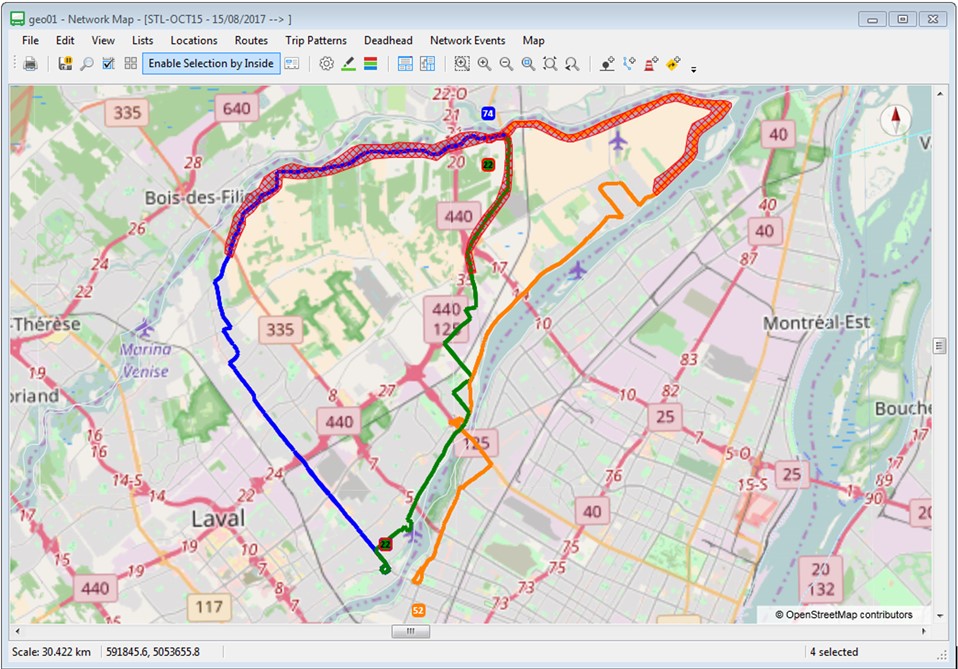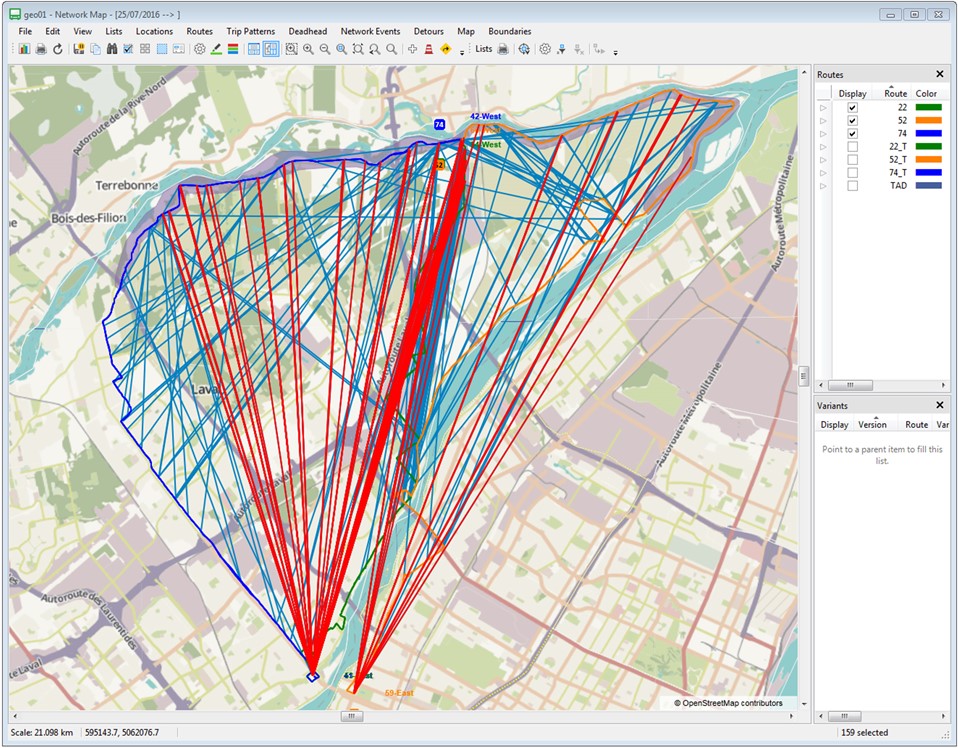No matter how new technologies and new players contribute to transforming the mobility landscape, transit agencies must always keep their eye on two factors so that public transport remains at the forefront of the mobility offer: service quality, which keeps riders loyal and attracts new ones; and efficiency, which ensures using the available resources to deliver the best service quality.
In low-demand transit zones, agencies face a dilemma. If a fixed-route service cannot be offered efficiently with a frequency that meets riders’ quality expectations, is there a viable alternative? Replacing or supplementing certain fixed routes with on-demand services seems an obvious choice. But how can agencies be sure that the expected benefits will materialize?
The Société de transport de Laval (STL) and software maker GIRO are seeking to answer this question by partnering in a study that simulates replacing portions of fixed routes in low-density areas with on-demand solutions. Several scenarios are being explored to analyse their economic feasibility and their effects for riders.
GIRO is the maker of the HASTUS-OnDemand software solution for planning, scheduling and operating on-demand public transport services. STL is the public transport provider in Laval, Québec’s third most populous city, lying adjacent to Montréal and with a population of 420,000.
STL operates more than 220 buses on 44 routes. Ridership is 70,000 trips per day and 22 million trips per year. The agency is known for embracing innovation in public transport: it was one of the first in Canada to implement a CAD/AVL system and the first to apply origin-destination models of its riders’ travel patterns.
STL and GIRO began collaborating late in 2017, using GIRO’s HASTUS Mobility Lab to examine the question of whether replacing certain portions of fixed-route bus service in low-demand areas with on-demand service would increase service quality for the same or lower cost. STL was interested in examining this solution as a way of increasing overall ridership by concentrating the use of buses on high-frequency corridors and using on-demand service to bring customers to bus stops. Three routes were chosen as the source of data for the study, with the following characteristics: on weekdays, 300 daily trips take place on all three routes combined; 50% of trips begin or end at two metro stations; headways are too long to be attractive; and there is low ridership at the far end of the route.

STL routes selected for Phase 1 study – line 22 (green), line 52 (orange) and line 74 (blue)
Phase 1 of the study simulated the impact of replacing the end portions of the routes with on-demand service, offered by outsourced taxis or vehicles that are already being used for paratransit. The initial outcome of the simulation demonstrated that switching part of the routes to on-demand services did not provide an “easy win”. One practical challenge was determining where exactly the reduced fixed route should end. It was also noted that increasing service quality by the introduction of on demand service was difficult due to low frequency of service at transfer points. Under these circumstances, the improvement in the quality of service was not significant. However, Phase 1 did show that replacing a portion of fixed-route services with on-demand services could result in a reduction in cost that was interesting enough to warrant further study.

Representation of weekday origins and destinations – about 50% of trips begin or end at two metro stations
The conclusion drawn from Phase 1 of the study was that a follow-up Phase 2 was needed. This phase is currently underway, using the same source data as Phase 1, with results expected in June 2018. One of the objectives of Phase 2 is to revise the transfer points between the fixed-route and on-demand services to provide a higher frequency of service, and to assess the effect that this has on the cost of the on-demand service and on the quality of service. Another objective is to evaluate service quality on the basis of overall travel time, to better reflect customers’ perceptions of quality by taking into account the different components of the whole trip such as walking, waiting at the stop, time on board, and the number of transfers. Phase 2 will also examine the difference in cost and service quality between real-time on-demand service and a service requiring advance booking.
If the results of Phase 2 confirm the potential advantages of supplementing fixed-route service with transport on demand, the next step would be to conduct a pilot project as Phase 3 to validate that the advantages can be achieved in an operational context. The HASTUS Mobility Lab infrastructure would be used for the duration of the pilot project.
Several elements will need to be considered in designing the pilot project. Will service be offered purely on a stop-to-stop basis or will there also be a door-to-door component? Who will be eligible for the service, when and for what fare? Will the on-demand service be offered in real-time or with advance booking? Will transfers be guaranteed and if so, to what extent, i.e. how long will connecting vehicles wait for the arrival of delayed fixed-route or on-demand vehicles? Finally, how long should the pilot project run?
These questions will be addressed when the results of Phase 2 are in. At this stage in the study, what is clear is that, before committing resources to a new service model by adding on-demand services to the fixed-route offer, conducting a simulation is crucial to ensure that the expected benefits are achievable. The study so far has shown that supplementing fixed routes in low-demand areas with new on-demand services can succeed as long as there is sufficient underlying demand and service quality is maintained with reference to riders’ perception of the overall travel time.

